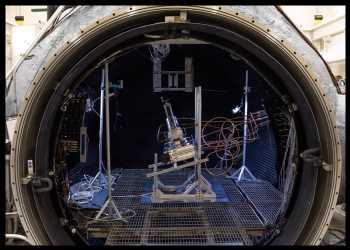NASA Scientists Successfully Extract Oxygen From Simulated Lunar Soil
During a recent test, scientists at NASA’s Johnson Space Center in Houston successfully extracted oxygen from simulated lunar soil. Lunar soil refers to the fine-grained material covering the Moon’s surface.
This was the first time that this extraction has been done in a vacuum environment, paving the way for astronauts to one day extract and use resources in a lunar environment, called in-situ resource utilization.
As NASA works toward sending astronauts to the Moon through Artemis missions, one of the agency’s primary goals is to establish a long-term presence on the lunar surface. Resources like oxygen are crucial building blocks for making that vision a reality. In addition to using oxygen for breathing, it can also be used as a propellant for transportation, helping lunar visitors stay longer and venture farther.
The team used a high-powered laser to simulate heat from a solar energy concentrator and melted the lunar soil simulant within a carbothermal reactor developed for NASA by Sierra Space Corp., of Broomfield, Colorado.
After the soil was heated, the team was able to detect carbon monoxide using a device called the Mass Spectrometer Observing Lunar Operations (MSolo). A similar device will fly on two upcoming exploration missions to the Moon’s South Pole – the Polar Resources Ice Mining Experiment-1 in 2023 that will help scientists search for water. a
In November 2024, NASA’s Volatiles Investigating Polar Exploration Rover (VIPER) will explore Mons Mouton, a large flat-topped mountain, to get a close-up view of the location and concentration of water ice and other potential resources.
“This technology has the potential to produce several times its own weight in oxygen per year on the lunar surface, which will enable a sustained human presence and lunar economy,” said Aaron Paz, NASA senior engineer and CaRD project manager at Johnson.
Source: Read Full Article

